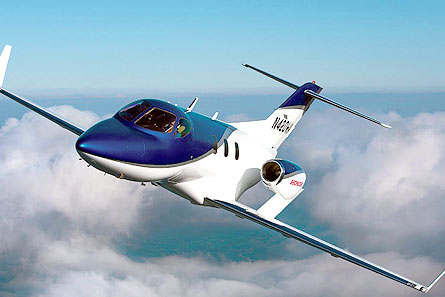By Jeffrey Decker in OshKosh
Honda today announced plans to enter the growing very light jet market by formally launching sales of the HondaJet at Oshkosh.
The company made the announcment at the US Experimental Aircraft Association's (EAA) AirVenture 2006 air show in Oshkosh, Wisconsin. The Japanese automotive company, which revealed the previously-secret project 12 months ago, will establish a new US company to pursue Federal Aviation Administration type certification and production certification. "We will have more information to share this [Northern Hemisphere] Fall," Satoshi Toshida, senior managing director of Honda Motor said. "But today we're excited to announce our intention to enter the very light jet market. We are very confident that HondaJet will be welcomed by customers and that it will quickly become the benchmark in the field of light business jets."
Honda will create a new American subsidiary to pursue certification of the jets, but officials wouldn't reveal where the jets will be manufactuered, other than to say it will be in the USA.
Sales and service will fall under a new partnership with Piper Aircraft. Piper President and chief executive James Bass was at the Honda exhibit in Oshkosh, Wisconsin to join in the announcement. "This business alliance is a perfect fit given the committment both Piper and Honda have to providing our respective customers with world class products and services," he said.
The announcements were made at Airventure, the same venue where Hondajet was first seen by the public one year ago.
Reporters had lots of questions for Michimasa Fujino, HondaJet project leader and vice president of Honda Research & Development Americas. No official performance specifications were given, but so far the 6-7 seat HondaJet has completed more than 240h of flight-testing since December 2003, reaching an altitude of 43,000ft (13,000m) and a speed of 412kt (765km/h) and is on course to meet or exceed all of its design specifications, says Honda.
The HondaJet features an over-the-wing engine-mount configuration, a natural-laminar flow wing and fuselage nose and an all-composite fuselage structure.
Fujino said the patented wing-mounted engines were one of the keys to the jet's superior spped, fuel efficiency and cabin space. "I am glad I no longer need to use the word 'experimental' when describing the HondaJet," Fujino said, adding that he was thrilled to give the world his "daughter."
Honda's goal is to complete certification in around 3-4 years, followed by the start of production in the USA.

Source: Flight International
















